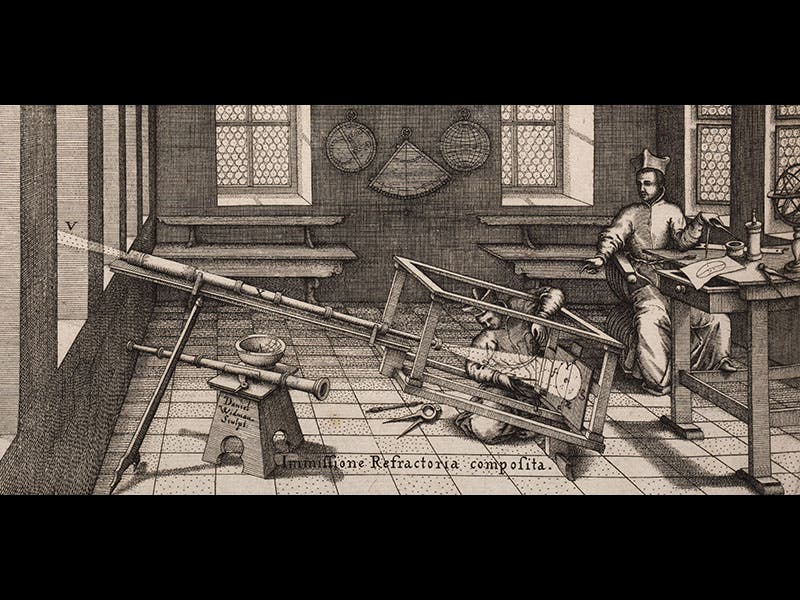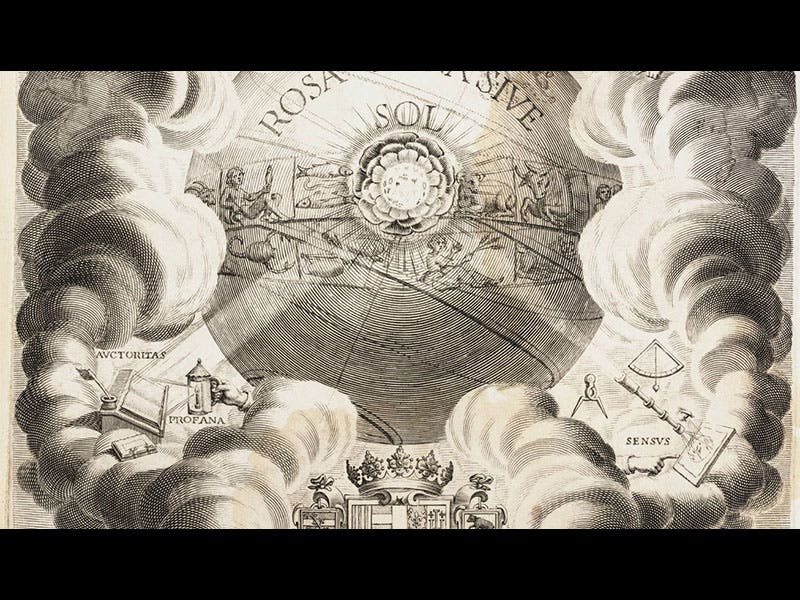Scientist of the Day - Christoph Scheiner
Christoph Scheiner, a German Jesuit astronomer, was born July 25, 1573. Scheiner was an early convert to the telescope as an astronomical instrument, and in 1611, he was one of three observers to independently discover sunspots, one of the others being Galileo Galilei. The two clashed, however, because Galileo disagreed with Scheiner's hypothesis that sunspots are the shadows of tiny orbiting solar moons, and because Scheiner published his letters on sunspots under a pseudonym, Apelles. Galileo ridiculed the "masked Apelles" and his hypothesis in several subsequent works; as a result, the two became bitter enemies, and Scheiner began to rethink the epistemological value of instruments such as the telescope.
From 1626 to 1630, Scheiner published his magnum opus, a mammoth folio called Rosa Ursina, the title honoring his patron at the time, Paolo Giordano II Orsini, the Duke of Bracciano (second image). The frontispiece of this volume is an elaborate allegory on epistomology and the sources of truth (third image). At the top, two beams of light stream out from the Godhead, and they are labelled Sacred Authority and Reason (fourth image). Both derive their certainty from God. Below, two more beams emanate from the Sun, and they illuminate Profane Authority and Sense (fifth image). Note that Sense is represented by a view through the telescope of the spots on the sun. Note also that the telescopic sunspots are fuzzy and imprecise. If we return to Reason at top right, we see that Reason too is represented by a view of the Sun, but this time the spots are sharp and clear. It is Reason, Scheiner seems to be saying, that allows us to make "sense" of our senses; Sense alone is never enough to establish anything with certainty. This frontispiece beautifully captures the divide that separated Galilean science and Jesuit science.
The same volume contains a folding plate with two images; the bottom figure depicts two solar observers using a telescope to project an image of the sun, with spots, upon a sheet of paper (first image). It is believed that the individual at the desk is Scheiner himself, using his powers of reason to deduce the nature of sunspots.
Dr. William B. Ashworth, Jr., Consultant for the History of Science, Linda Hall Library and Associate Professor, Department of History, University of Missouri-Kansas City. Comments or corrections are welcome; please direct to ashworthw@umkc.edu.









![Using an astrolabe to measure the depth of a well, woodcut in Elucidatio fabricae vsusq[ue] astrolabii, by Johannes Stöffler, 1513 (Linda Hall Library)](https://assets-us-01.kc-usercontent.com:443/9dd25524-761a-000d-d79f-86a5086d4774/a998eb50-55d2-4a88-ace2-a50aa5fa86e7/Stoffler%201.jpg?w=210&h=210&auto=format&fit=crop)

